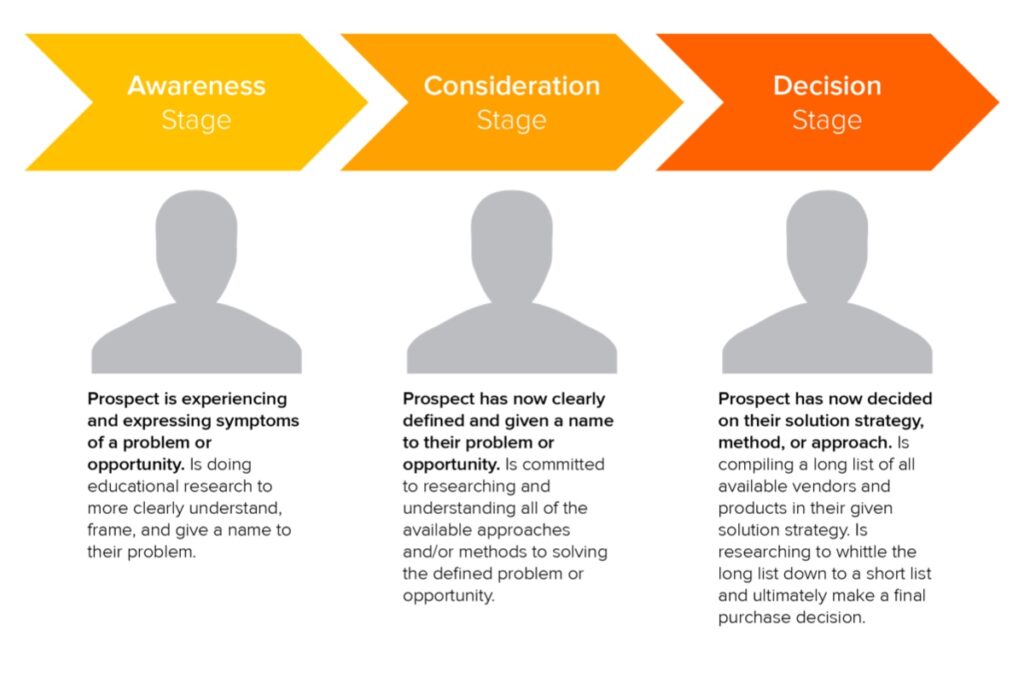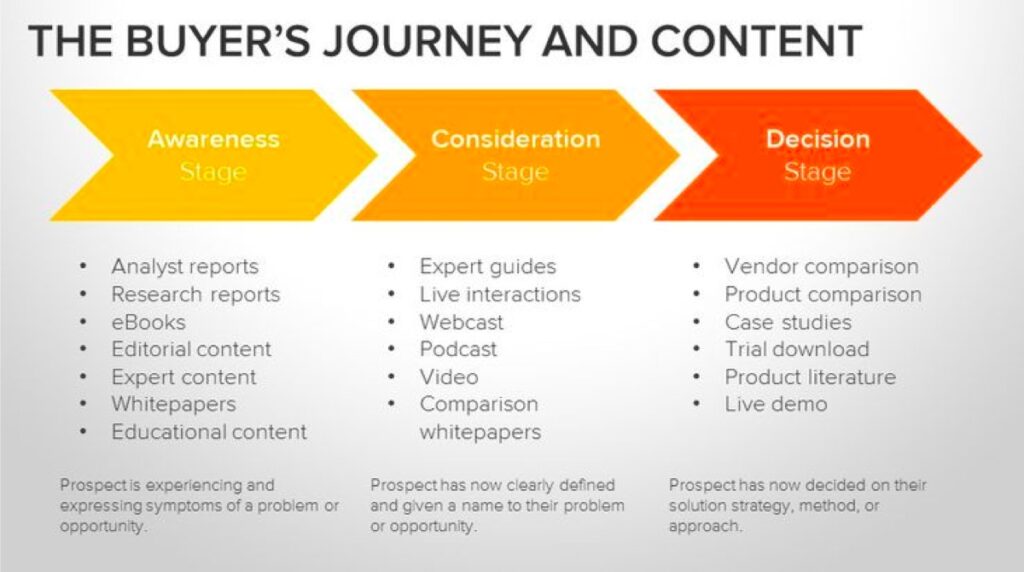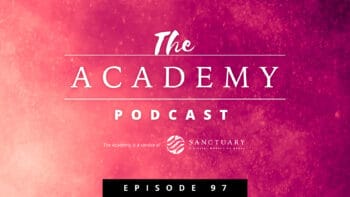
Some purchases happen on a whim. For example, if you are walking through the grocery store and see a freshly baked treat near the end of an aisle, you might grab it on your way to the checkout line with almost no pause for consideration. It’s affordable, you are hungry and it looks delicious.
Those kinds of purchases are the exception, however. Most of the time, and particularly for more expensive goods and services, there is a buying journey that needs to be carried out before a sale is made. For businesses with products or services to sell and plenty of competition to overcome, understanding the buyer’s journey is an essential piece of a successful marketing strategy.
In this article, we explain what a buying journey is, why it is important in digital marketing, and how understanding it can lead to better results for your business. This is a foundational concept in the world of marketing, so we think this discussion is well worth your time and attention.
What is a Buyer’s Journey?

Before we go any further, it’s important to clearly define what we mean by a “buyer’s journey” and why it matters so much to your marketing efforts. Quite simply, the buyer’s journey is everything that happens on the road to making a purchase. As mentioned in the intro, the buyer’s journey is sometimes quite short, like in the case of an impulse buy. Most of the time, these are inexpensive items that cost just a few dollars or less.
For larger purchases or services that are a substantial investment of money, the journey can be much longer. Often, your business will need to engage with a potential customer several times before they decide to buy from you. It’s helpful for you to understand how the buyer’s journey works for your products or services because that can inform the marketing decisions you make in the future. As a general outline, you can think of the buying journey in terms of these three stages:
- Customer awareness. Awareness is the starting point. The first time a prospective customer becomes aware of your business or your brand is the start of their buying journey. Not everyone will progress all the way to the end and become a customer, of course, but everyone starts at the same point. Some marketing activities are focused primarily on driving awareness, which means putting a brand or product in front of as many people as possible to kick start the buying journey for a large audience.
- Considering a purchase. Once a potential customer becomes aware of your brand, they will hopefully move onto the consideration phase, in which they consider whether or not they want to buy. What happens during this stage will depend on the individual and what it is you are selling. The potential customer could be seeking more information about your products to learn what they offer and what problems they solve. Or, this could be a time to explore alternatives and see what other products are on the market.
- Making a decision. Finally, the decision phase is when a sale occurs. A prospect that makes it to this point has learned about your company, considered what you have to offer and has decided to buy something from you. This entire process could play out in a matter of moments, or it could take weeks or months (or even years) to conclude. One of the best things about guiding a prospect all the way to the end of the buying journey is that they will be more likely to buy from you again in the future after they have made one purchase. Rather than starting again from the beginning of the process and hoping the prospect makes it through, repeat buys are much more likely to occur.
It’s important to mention that nowhere near 100% of the people who discover your business will make it all the way to the end of the process. This buyer’s journey is often referred to as a “funnel” because of how it narrows from the top down to the bottom. You may have 100 people at the awareness stage and wind up with only two or three making a purchase. The percentage that turns into actual customers will depend on your market niche as well as the quality of your marketing efforts.
Gauge Where Your Prospects Are at in Their Journeys
It would be great if you could simply ask each of your prospects where they currently are in the buying journey. That would provide you with all the information you need to make good decisions, but alas, it simply isn’t practical. You will need to develop other methods of figuring out where in the process a prospect is likely to be, so you can then meet them there with the right information to move the journey along.
One of the best ways to determine where a prospect is in the journey is to think about where they are interacting with your business. For example, someone who is seeing a digital display ad on a search result page is very possibly interacting with your brand for the first time, so they are in the awareness stage at the very beginning of the process. That won’t be true in every single case, of course, but in general terms, you can assume that people in this position are just now being exposed to what you have to offer.
This is a different situation than what would be found with your social media followers. If someone has already decided to follow your social account, they know what you offer and are at least somewhat interested. Whether they will continue through the buying journey is yet to be seen, but you can assume they are beyond the awareness stage and are potentially considering a purchase.
Finally, someone who lands on a product page on your website may have reached the decision stage where they are trying to determine if they will spend the money and buy what you have to offer. As a result, what you present on your product page is likely to be far different than what is found in a display ad or even on your social media channels, since the people seeing those messages are at different stages of the journey.
Use the Right Tactics in the Right Stage

The explanation above of how you can determine where a prospect is in the journey is a good outline, but it is going to vary wildly from business to business. There needs to be some time and effort spent within your organization to see how your buying journey plays out and where you are most likely to find prospects in each of the three stages.
Once you have that piece nailed down, it will be time to think about the tactics you are going to use to interact with the prospects at each point along the way. Again, this is another element that varies from brand to brand, but here are some ideas to get your mind working.
- Educate early on. When someone is just getting to know your brand, offering them free educational materials is a great way to build trust and deepen the connection. So, you might produce a free e-book that is offered to people who you have determined are high in the funnel. This will be a piece of content that is useful even if the prospect never makes a purchase, but it includes information about how your product or services can solve a specific problem. Giving this away for free could build some goodwill while also demonstrating the expertise you have in the space.
- Case studies. One of the most powerful ways to connect with potential buyers is by presenting them with case studies. However, this will be most effective for people who are already aware of your brand and are somewhere in the consideration phase. So, you might create a case study about how you have helped a past customer and you could share that study on your social media channels for your followers to see. This case study can go into the details of how you were able to solve a problem and how impressed the past customer was with the experience.
- Landing page details. After guiding prospects to the bottom of the funnel, the landing page you present can make all the difference between closing the deal and losing a sale. In addition to engaging, conversational copy, the landing page should present some sense of urgency for the individual to make the purchase now rather than later. This could come in the form of a deadline, a discount that will expire soon, or some other tactic.
It’s certain that some trial and error will be involved to figure out what works best for your business. And, even within your business, it’s likely that the methods that get the best results will vary from product to product. Now that you understand the concept of the buyer’s journey, it’s one of your most important jobs to determine how it plays out in your organization and how you can optimize your process for the best results.
Be Prepared for an Ever-Changing Marketplace
There is one last point we need to make on the topic of buying journeys, and it’s this… You can’t assume that the system you have in place today will still be working next year, or even next week. The status of your business in the marketplace is always changing, so you need to pay close attention and make changes to your approach, as necessary.
As an example, consider the arc of a business over the course of its early lifecycle. At the beginning, no one knows what the business is, and the primary goal of marketing efforts is to raise awareness. The general public (or whoever is the target market for the products and services) needs to be informed about the presence of the new business and what it has to offer. As time passes, however, awareness will become less important, and the emphasis will turn to improving the conversion rate of how many prospects are turned into actual customers.
If you have been frustrated by lackluster results in your marketing efforts, it may be that your current campaigns don’t line up properly with the way your prospects are moving through the buying journey. We hope the ideas and examples in this article will help you review your current methods and make changes that lead to better results. Meeting your prospects with the right marketing message at each step along the journey is a challenge, but it can be highly rewarding when done correctly. Good luck!
Most Popular Articles

Seeing Favicons in Your Google Search Results? Here’s Why…
Have you noticed anything different in your Google Search results lately? Google added tiny favicon icons to its organic search results in January. It was…

Business Growth and Digital Marketing News & Tips 11-17-24
Are you encouraging and rewarding innovation? Lee Cockerell is the former Executive Vice President of Operations at Walt Disney World. A lover of traditional red…

Business Growth and Digital Marketing News & Tips 11-27-24
A culture of gratitude "Feeling gratitude and not expressing it is like wrapping a present and not giving it." – William Arthur Ward Beyond being…








